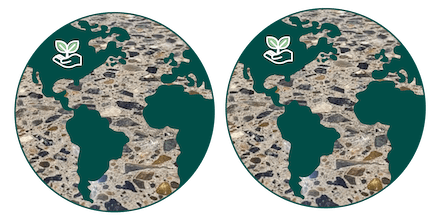Maybe polished concrete is not the first thing that pops to mind when someone mentions “being green.” Recycling, conservation, and slow fashion get lots of press, as well they should. Still, when the talk winds down at the end of the day, everyone’s standing on something. And if that surface is polished concrete, we all might be a bit “greener.”
The fact is, once a concrete slab is poured, which is required for most base floors, the simple act of grinding and polishing the slab is not as environmentally invasive as other, more complex flooring solutions. This is because most everything needed is already there, and few, if any additional raw materials are consumed. Recycled products such as crushed glass, marble chips, and metal shavings can also be incorporated, rather than thrown away. And once the polishing and grinding are complete, the only products generally added are water-based hardeners and stain-resistant treatments. What else does that mean? No volatile organic compounds (VOCs), which is a good thing.
There are other ways that polished concrete can be enviro-friendly. First of all, it’s very energy-efficient, having a high thermal mass that naturally draws its temperature from the ground, rather than the air. So, it tends to be warmer in the winter and cooler in the summer, regulating indoor temperatures and saving on electricity for heating and cooling. And it’s also highly reflective, which can increase ambient lighting up to 30%, while cutting costs. Finally, let’s not forget that polished concrete flooring is hypoallergenic, which means that it won’t generate dust or promote the growth of mold and mildew. This can save on air filtration/purification, vacuuming, and associated energy consumption.
When all is said and done, polished concrete is a versatile and cost-effective flooring solution that is low-maintenance, sustainable, and conducive to a range of energy savings. Whether one calls it “green,” “environmentally friendly,” or simply “energy efficient,” doesn’t really matter. The advantages are the same. And if you don’t want to contradict Kermit the frog regarding the ease of his coloring, keep in mind that the sun’s light actually peaks at a wavelength that we would describe as green. The human eye just can’t see it.
